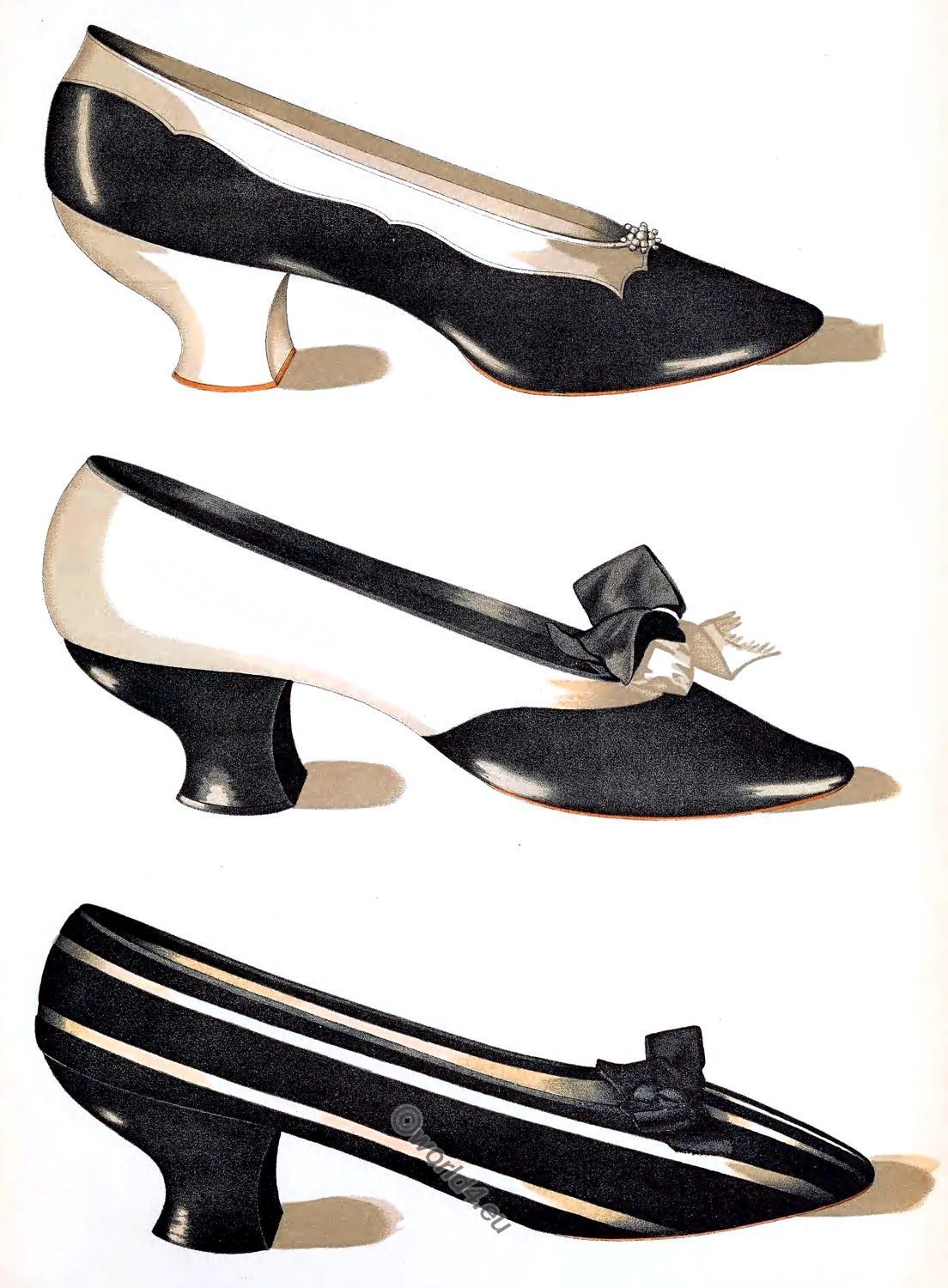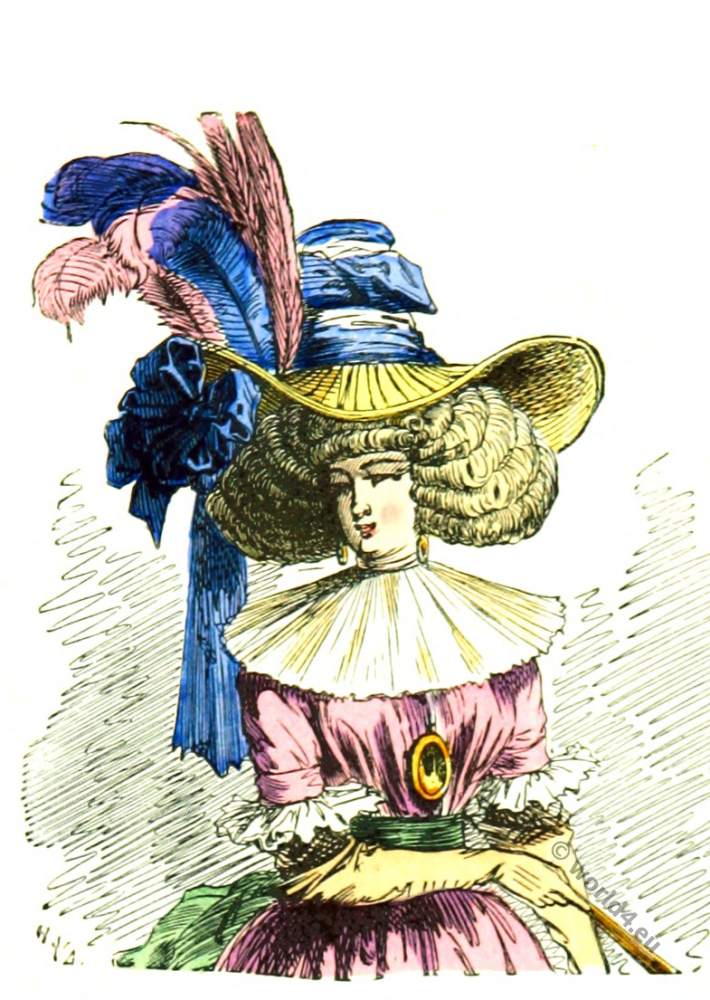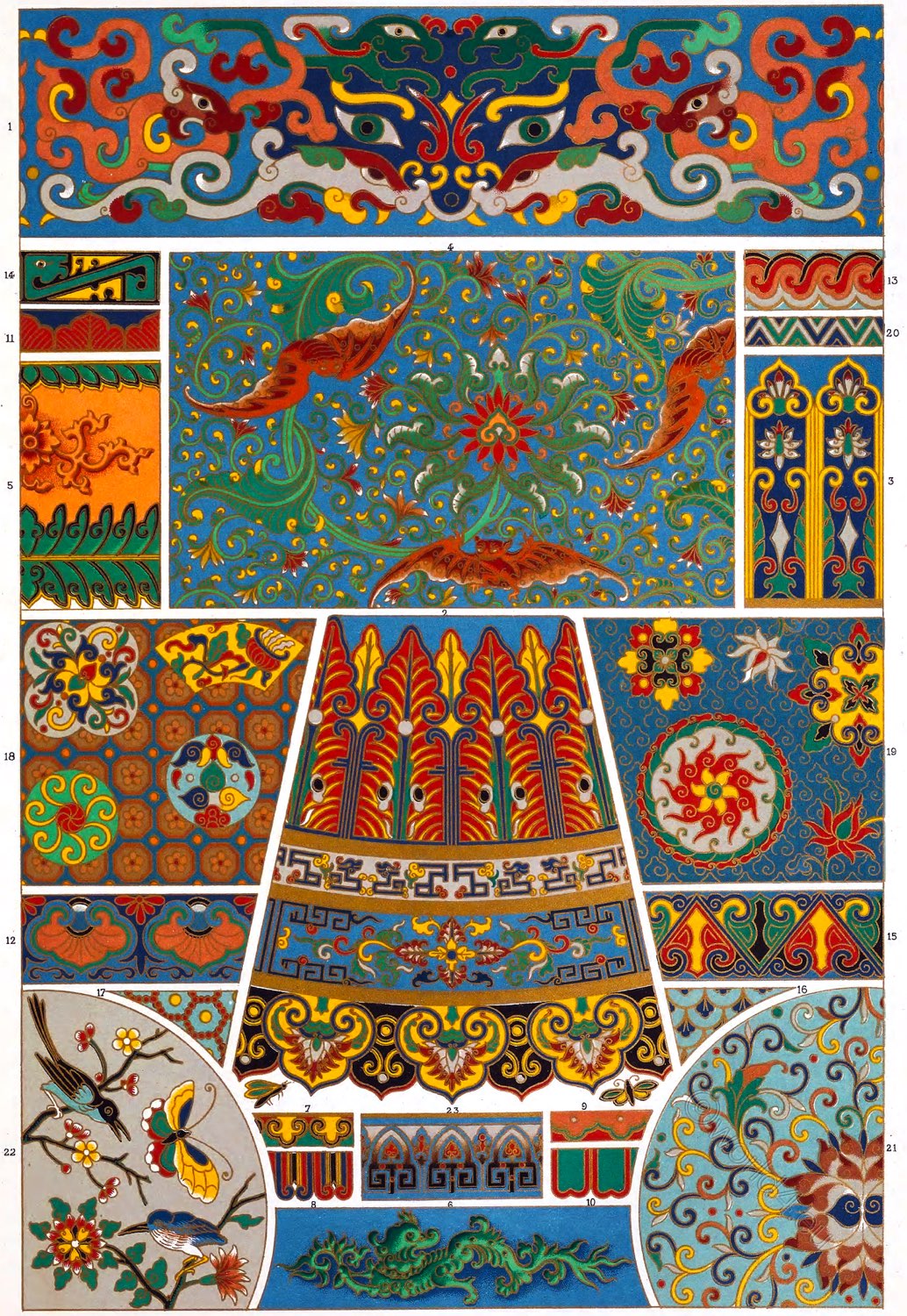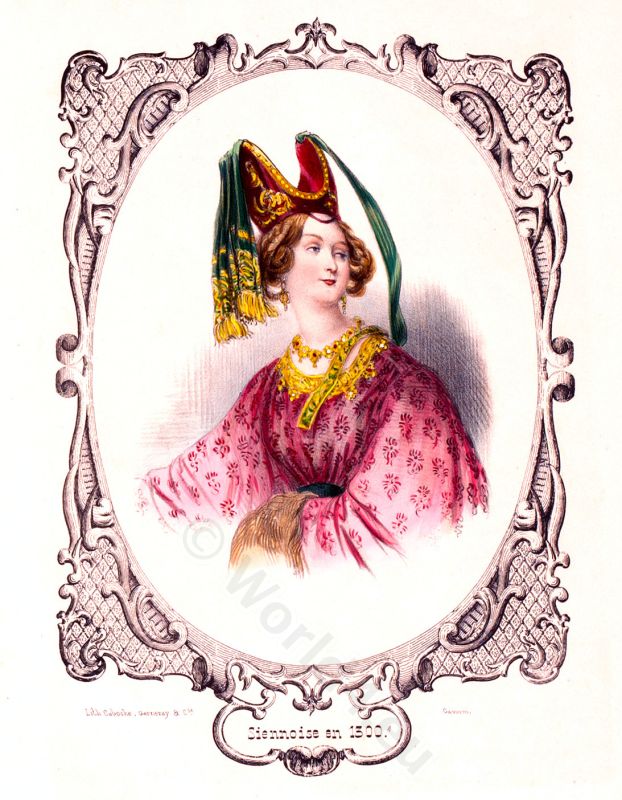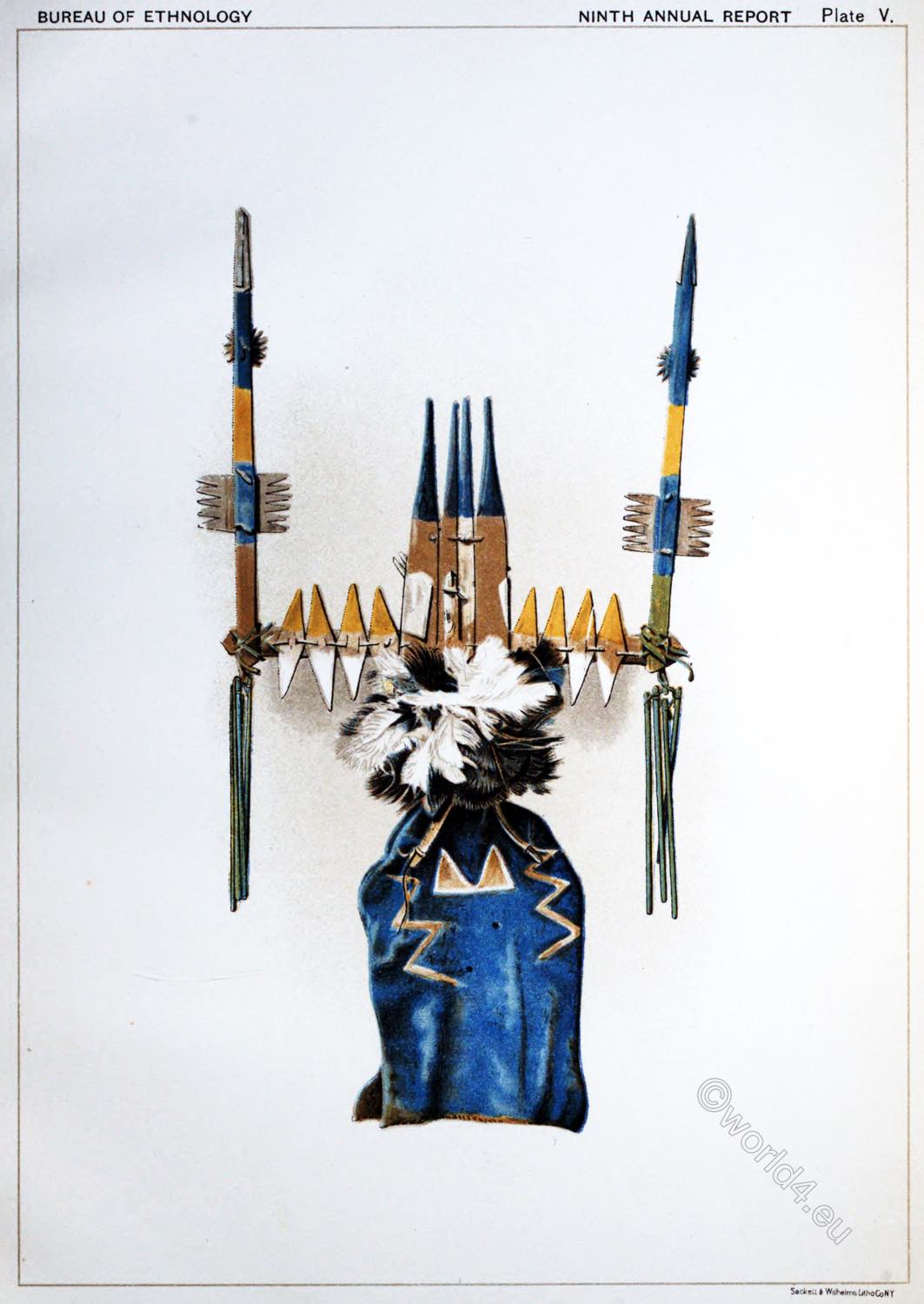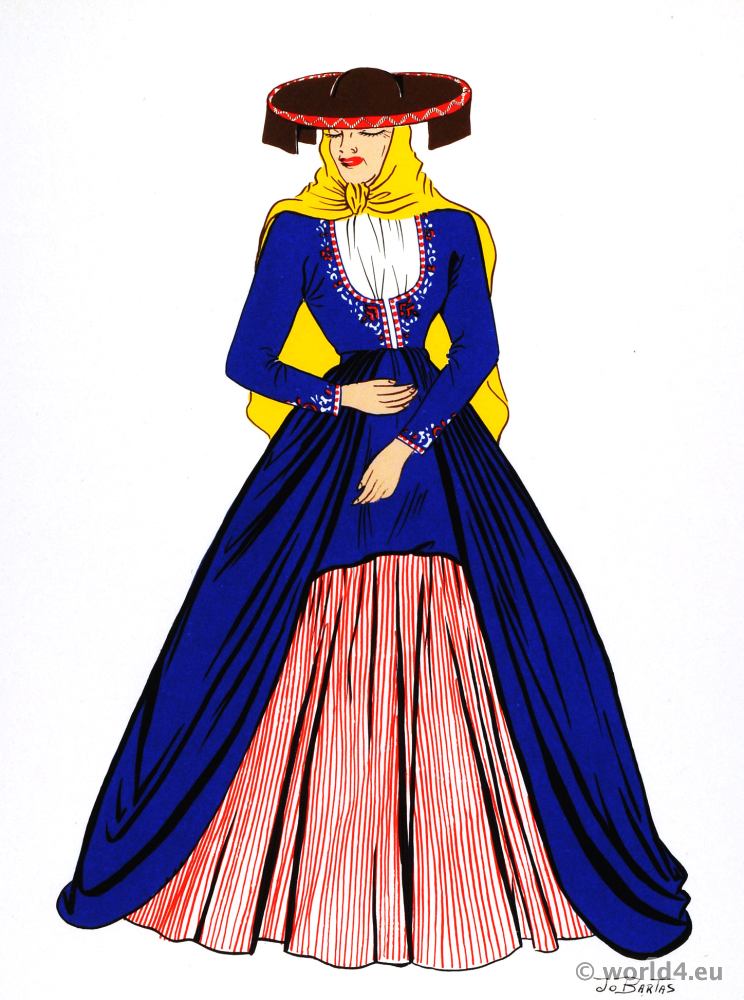
Russia. Headdress of the women of the people.
These bonnet and cap-like headpieces all originate from Old Russia and are peculiar to the Russian slaves. The specimens shown here come from the governorates of Novgorod, Kaluga, Tver and Kursk.
They represent different types of the Chepatz called cap worn by the wives of merchants and peasants, as well as their earrings and necklaces. The ornamentation and the shape of this cap goes back a long way. It is found on portraits of princes belonging to the early Middle Ages. Perhaps they were brought by the Asian nomadic people of the Polovts, who invaded Russia around the middle of the 11th century. Folk women have retained the habit of using heavy make-up, covering their faces with layers of white and red.
No. 1. headgear from the Bielozersk district, Novgorod governorate. It is made of a stiff weave of gold threads, the ornamentation of which consists of a white metal strip decorated with silver beaten gold and white beads sewn on it and united in rosettes. The border hanging down on the forehead is also made of pearls. The narrow shirt collar has an openwork embroidery and is closed by a sapphire. The earrings consist of grape-shaped grouped pearls, which are mounted with gold.
No. 2. bonnet of similar shape, but straighter at the front and with a fringed border of short hanging strings of pearls. The ornaments are made of silver leaves sewn onto the gold ground. The earrings and the necklace consisting of eight strings are made of pearls. Resident of Tikhwin, Novgorod province. – The same arrangement is repeated on the other caps, only that nos. 3, 5, 6, 7 are still decorated with rubies, topazes, sapphires, large pearls and even diamonds. At no. 4 the base of the cap is red and the embroideries are coloured. The border is again of gold fabric and decorated with pearls, which are threaded on thick threads and sewn together. The resulting fabric is folded tube-like. The same arrangement can be found in No. 6.
No. 3 is a girl from Bielozersk, No. 4 a woman from Tikhvin, No. 5 a woman from Ustyug-Yelezepolskoi, Novgorod governorate, No. 6 a woman from Kaluga am Oka.
(After paintings sent by the Russian government to the exhibition of the Geographical Society in Paris in 1875)
Source: History of the costume in chronological development by Auguste Racinet. Edited by Adolf Rosenberg. Berlin 1888.
Related
Discover more from World4 Costume Culture History
Subscribe to get the latest posts sent to your email.

